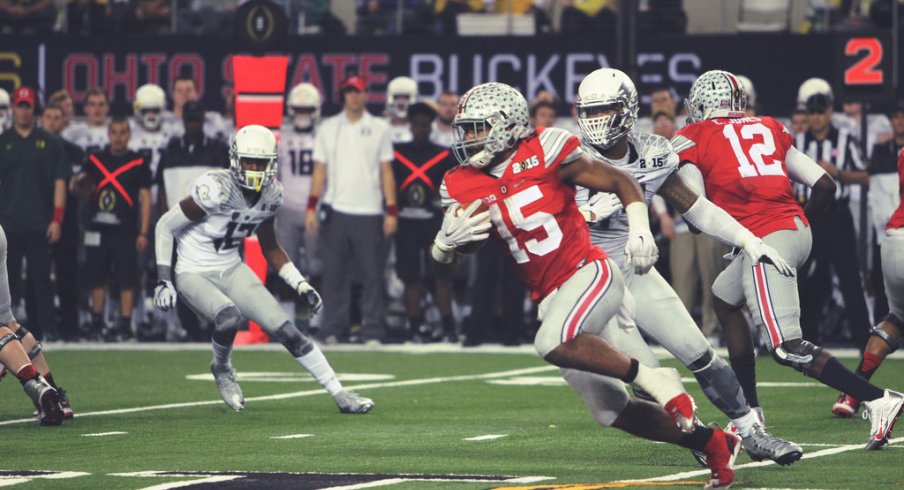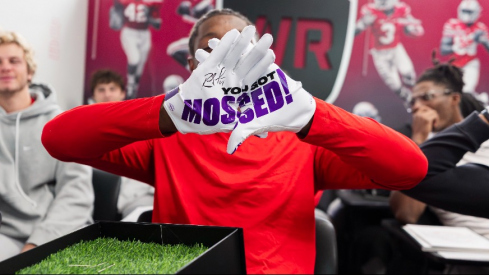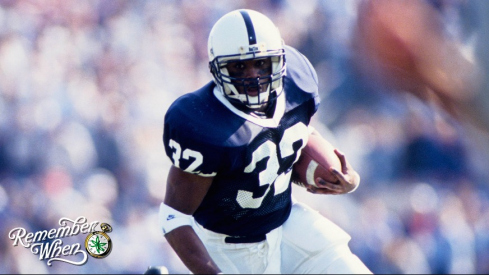Although many factors — both in scheme and execution — contributed to Ohio State's national championship playoff run, one of the most critical was the diversity of Urban Meyer's spread run game.
By being able to mix and match gap and zone run schemes, the Buckeyes could respond to a variety of defensive fronts and stay a step ahead of Alabama and Oregon.
An Oxymoron
At first glance it may sound odd to say that Ohio State has a diverse run game when the Buckeyes effectively only use five concepts. Inside zone, outside zone, sweep read (a pin and pull version of outside zone), one-back power (with either a guard or tackle pulling) and two-back power (counter trey) constitute an overwhelming percentage of the Ohio State run game. And of those, inside (or tight) zone is undoubtedly the Buckeyes' primary play.
By minimizing the base concepts, Meyer and his coaching staff ensure that the Buckeyes will excel with those schemes. The offensive line drills with countless repetitions, reducing the use of practice time and ensuring that they do not need to learn new schemes weekly.
Yet the focus on these zone and gap schemes does not differ greatly from other spread teams such as Oregon. Where Meyer differentiates his run game is by using four positions — the quarterback, tailback, H slot receiver, and Y tight end — as a multiplier effect to run those base concepts in a variety of ways.
Any of the base runs can be called for either the quarterback or tailback without any change to the blocking scheme. This allows the run game to hit multiple fronts and forces the defense to defend the entire field — without knowing where the football is going pre-snap.
Meyer uses tags for the H, the Y and the tailback to create variations on the same play. Most notable is combining H jet sweep action with a run play. This forces a defense to rotate its secondary and threatens the back side of the defense — opening the frontside for the run play.
The Buckeye coaching staff will also tag sweep action to the tailback away from the blocking action. Known as bash, the quarterback and tailback trade responsibilities on this play.
Meyer generally uses a bash tag with inside zone. So the quarterback runs inside zone with the tailback running a sweep. The quarterback still reads the defensive end to determine whether to give or keep.
Bash epitomizes Meyer's use of the quarterback and tailback to stretch the field, and also his use of tags to diversify base run plays.
Although it is perhaps less heralded than bash, tagging the Y to block back or pull allows Ohio State to respond to various defensive fronts. One such staple is split zone.
On split zone, the Buckeye offense still executes the base inside zone run — with one exception. The Y blocks back to seal a backside defender, creating a natural cutback lane.
The upshot: by using tags and multiple ball carriers, the Ohio State coaching staff can keep things simple for the offense while threatening the defense in a variety of ways.
Hit 'Em Where they Aint
A lack of run game diversity contributed to the Buckeyes' early season loss to Virginia Tech. The Hokies deployed a bear front to take away Ohio State's base inside zone play, and the Buckeyes failed to adequately respond.
But this failure set the stage for later success. As teams tried to mimic Virginia Tech's playbook, Meyer and offensive coordinator Tom Herman were forced to use other methods to run the football. It was this trial and error experience that allowed Ohio State to adapt to similar tactics from their late season opponents.
Nowhere was this more important than in the playoffs against Alabama and Oregon. Like Virginia Tech before them, both opponents sought to take away inside zone. But Ohio State successfully responded, using run game diversity to exploit resulting weaknesses in each opponent's scheme.
Alabama's weak point was on the edge. The Crimson Tide combined a stout interior run defense with the frequent use of a tight 3-4 front.
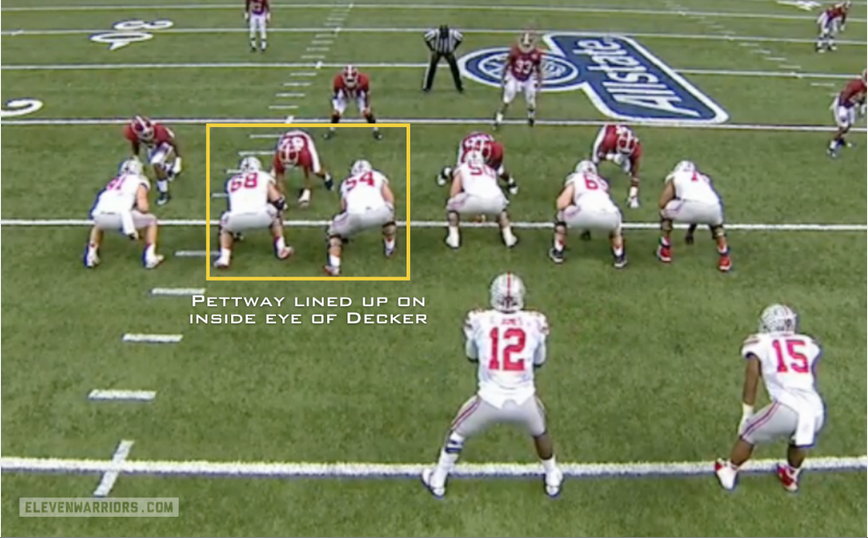
In response, Ohio State attacked outside with bash and sweep read. The result was 230 rushing yards from Ezekiel Elliot — 85 of which came on a critical fourth quarter pin and pull outside zone.
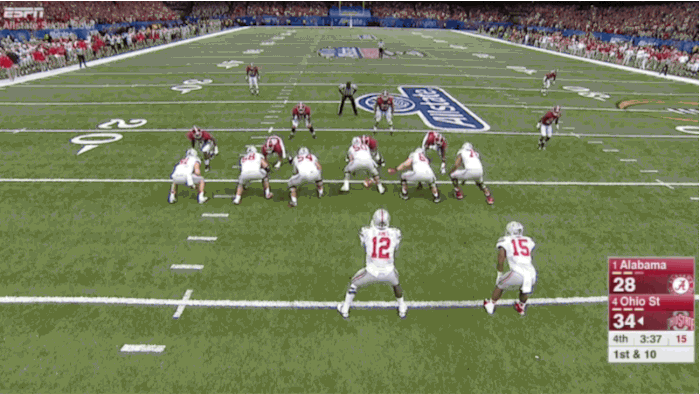
Against Oregon, the Ducks' defensive weakness was off-tackle. Given the Buckeyes' early season struggles with Virginia Tech it was perhaps fitting that the Ohio State offense faced Oregon in the national championship game — because the Ducks' base defense was a 3-4 bear front.
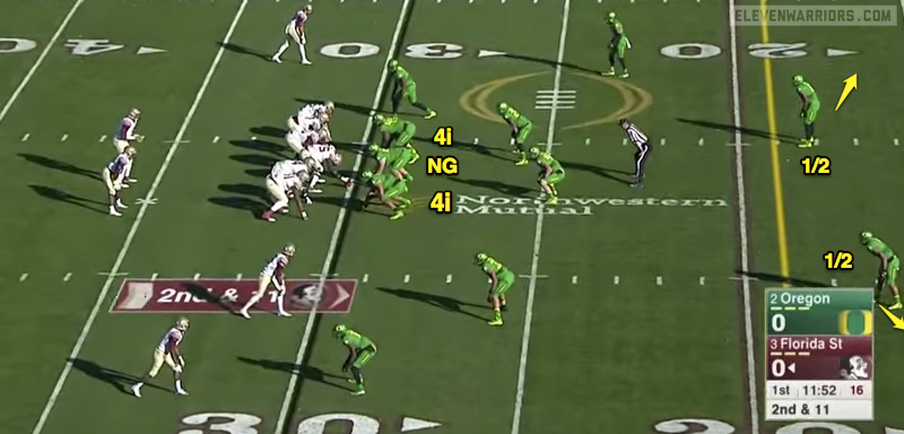
The tight alignment of the Oregon defensive ends left the Ducks vulnerable in the C gap between the tackle and tight end — an area where Oregon left two uncovered gaps between the down lineman and outside linebackers.
Ohio State attacked this area in two ways. In the first half, the Buckeyes used a form of split zone — a wham block. The Ohio State offensive line blocked inside zone. But the Y blocked back against the first backside defensive linemen past the center.
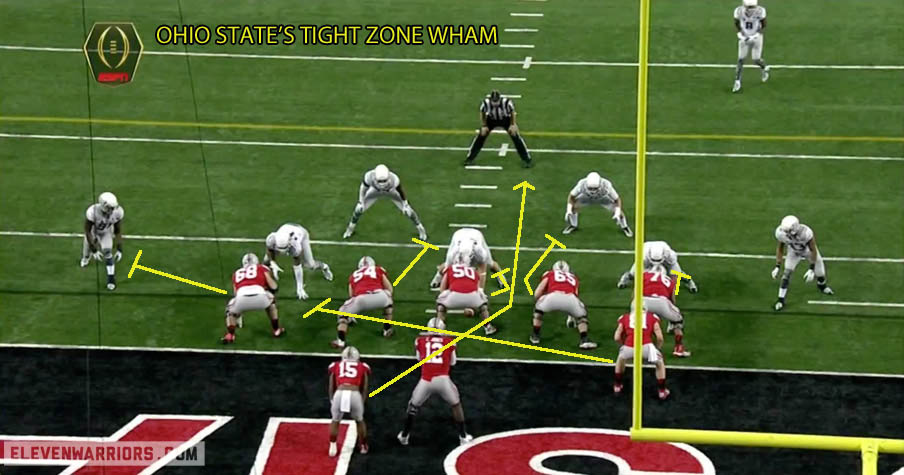
This opened the play to the front-side.
Even more successful was the Buckeyes' second half use of counter-trey. This play epitomizes how Meyer diversifies the run game.
As noted, counter trey has long been a staple of the Meyer offense. But it has primarily featured the quarterback.
Against Oregon, the Buckeyes ran the play to Elliott at tailback. And Meyer and Herman combined the run with a jet sweep fake to the H, frequently into an unbalanced formation.
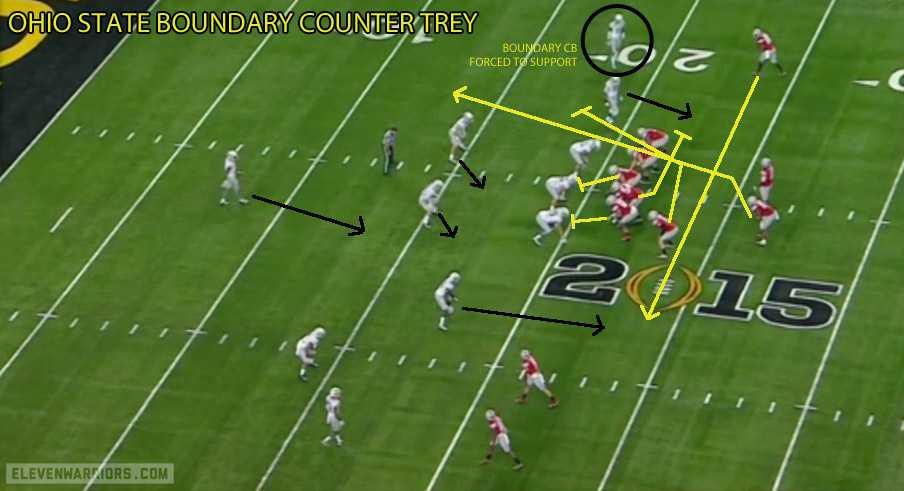
The counter trey blocking scheme created simple down and kick-out blocks for the offensive line and tight end. And the jet sweep fake — combined with the unbalanced look — forced the Ducks to rotate their secondary to the field. The result was that Elliott was left with a big hole — and one on one in the secondary.
As noted, offenses such as Oregon use similar concepts. But the Ducks were unable to adjust in the national championship game once the Ohio State defense limited their inside zone run.
Meyer, by contrast, is able to use the threat of the quarterback and running back — and versatility of the H and Y — to create opportunities against a variety of defensive looks. And once Meyer finds a play that works — such as that counter trey — he will use it until an opponent stops it.
